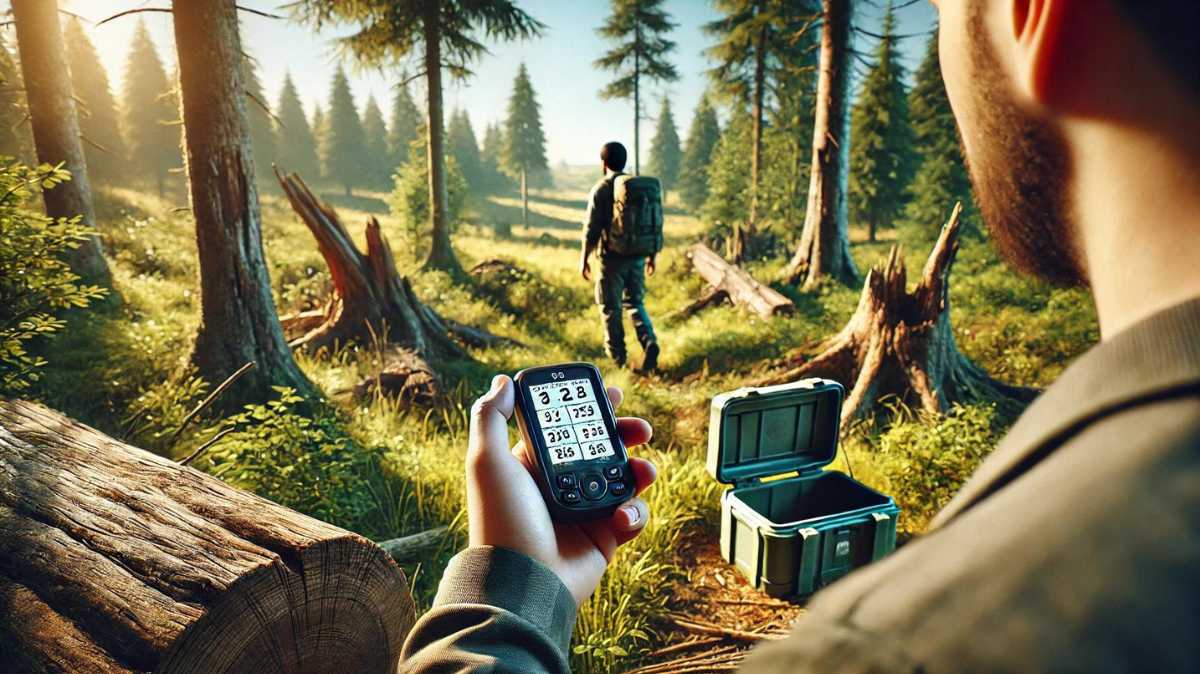Geocaching is an adventure-packed, treasure-hunting hobby that thrives on surprises, puzzles, and discovery. But what really gets the adrenaline flowing for expert geocachers? The hitchhikers—those sneaky little items that refuse to stay put! A geocache hitchhiker is an item with wanderlust. Unlike traditional swag that’s traded and stays put, these items are designed to travel from cache to cache, often with a mission or a story to tell.
Let’s unpack the mystery, excitement, and occasionally head-scratching aspects of geocache hitchhikers. Whether you’re an experienced geocacher or an educator guiding the next generation of treasure hunters, understanding these restless trackables can elevate your caching experience.
The Anatomy of a Geocache Hitchhiker
So, what exactly is this magical item? A geocache hitchhiker is typically a trackable item, which can come in many forms, like a Travel Bug or a Geocoin. It’s not just any trinket you can stash away in a cache—it’s a tagged, traceable traveler. These items have unique serial numbers or tracking codes that allow you (and anyone else) to monitor their journey online, often through Geocaching.com.
The key characteristic of a hitchhiker? Mobility. Unlike swag, which stays in a cache for the next visitor to find and potentially trade, hitchhikers are designed to move. Once discovered, geocachers pick them up, log them, and move them to another cache, continuing their journey. Some hitchhikers have missions—like traveling to a specific country or visiting all 50 states—while others simply exist to rack up miles or see as many caches as possible.
Why Are They Called “Hitchhikers”?
The term hitchhiker derives from their nomadic nature, mimicking a traveler hitching a ride from one cache to the next. Imagine a tiny globetrotter, hopping from cache to cache like a well-worn backpacker trekking across Europe. With each find and placement, hitchhikers “hitch a ride” with geocachers, documenting their travels in the process.
Humorously, some geocachers even treat their hitchhikers like tiny digital hitchhikers with travel logs and updates—a quirky community touch that adds flavor to the whole experience.
Types of Geocache Hitchhikers
Here’s where things get interesting—hitchhikers come in a variety of forms:
Travel Bugs – These are the most common form of geocache hitchhikers. They’re typically a tag attached to an item, from keychains to action figures, with a mission to travel from cache to cache.
Geocoins – A favorite among geocaching collectors, Geocoins are custom-made coins that travel like hitchhikers, often stamped with intricate designs. Many collectors release copies into the wild while keeping the original at home.
Personal Travelers – These are items geocachers “dip” into caches to log mileage between geocaches. Personal travelers never actually leave the owner’s possession but track every step of the owner’s caching journey.
Each of these items has a life and personality of its own, bringing a new level of excitement to the game.
Logging and Tracking Hitchhikers
Once you’ve stumbled upon a hitchhiker in a cache, the process of logging it is straightforward—but crucial. Geocachers must follow a specific process to ensure the item’s journey is properly documented:
- Retrieve the hitchhiker from the cache.
- Log it online using the unique tracking number.
- Move it to a new cache and log its placement.
Failing to log the item can cause chaos in the digital trail and frustrate the owner, not to mention other geocachers following its journey. If you’ve ever lost track of one, you know the pain—it’s like losing your favorite traveler without a map to bring them home.
Geocache Hitchhiker Etiquette: Play it Right
A hitchhiker’s journey depends entirely on the geocaching community. That means there are unwritten (but fiercely followed) rules to ensure everyone has fun. First, never keep a hitchhiker unless it’s yours. They belong to the community and must keep moving.
Second, follow the mission. Some hitchhikers have goals, like visiting specific types of geocaches, traveling to particular regions, or accumulating miles. Make sure you read the mission and help the hitchhiker achieve its goal. You wouldn’t want to disappoint a traveler longing to visit Mount Everest by leaving it in a suburban park, right?
Lastly, if you can’t move it along soon, it’s better to leave it for someone else. Hitchhikers don’t want to be stuck in limbo—after all, they’re in the game to explore, not sit idle in your garage.
Common Pitfalls and How to Avoid Them
Lost Hitchhikers: These are inevitable, but you can do your part by ensuring the tracking number is legible and securely attached. If you’re placing a hitchhiker in a busy area with lots of geomuggles (non-geocachers), try to hide it well to avoid accidental discovery and theft.
Misplaced Missions: A cache hitchhiker with a mission should stay on course! Don’t take a bug from a New York-bound quest and drop it in Los Angeles unless it’s part of the mission. Always check the hitchhiker’s goals before moving it.
Final Thoughts: Keep the Adventure Going!
Geocache hitchhikers are like the world’s smallest, most fascinating travelers. They bring an extra layer of excitement, mystery, and responsibility to geocaching. By understanding what hitchhikers are, respecting their missions, and following proper etiquette, geocachers can enhance their own experience while contributing to a game that thrives on global participation.
Next time you find one, remember—it’s not just swag, it’s a story waiting to unfold. And who knows? That little hitchhiker in your hand might just be halfway through a journey around the world.
FAQs About Geocache Hitchhikers
Q1: Can I keep a geocache hitchhiker?
No. Geocache hitchhikers are meant to travel, not to be kept. Always move them to a new cache and log the journey.
Q2: What happens if I lose a hitchhiker?
If you lose one, make sure to log it as lost online. Inform the owner as well.
Q3: How do I know a hitchhiker’s mission?
Most hitchhikers have mission details on their trackable page. Read it before moving the item.
Q4: Can I create my own hitchhiker?
Yes! Purchase a trackable tag like a Travel Bug and attach it to an item of your choice. Create a mission for it and let it roam!
Q5: Are all trackable items hitchhikers?
Not necessarily. Some geocachers keep trackables for personal use, only “dipping” them into caches to log their travels without releasing them.
Author

An aspiring business leader, I am working towards my dream of graduating from Stanford University with a degree in Business Management. Passionate about sharing knowledge, I strive to empower others through education and collaborative learning.
View all posts


